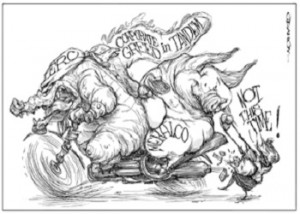When I first joined the National Food Authority (NFA), then the National Grains Authority (NGA), in 1977, it was the buyer of last resort of palay produced by our Filipino farmers and a seller of last resort of rice for our Filipino consumers.
Meaning, the NGA was there for the farmers to turn to only if the buying price of palay by private traders was much below the NGA’s support price (which was supposedly set at a level that would allow farmers to earn a reasonable income from their palay produce).
The NGA rice stocks, on the other hand, ensured that there was available rice inventory during lean months and when a calamity or disaster struck anywhere in the country.
But today the NFA is buying palay aggressively and competing with private palay traders, which I believe is fundamentally wrong even if traders are buying palay above the government support price.
Buying palay from farmers even if the rice traders’ buying price is above or comparable to the government support price is wrong because the more rice the NFA is able to buy from farmers, the more losses the government incurs.
For instance, if the NFA buying price of palay is P18/kilo including incentives, the reasonable selling price of milled NFA rice would be around P35 to break even. But since it is selling NFA rice at a subsidized price of P25/kilo to retailers, who are supposed to sell to ultimate consumers at P27/kilo, the NFA loses P10/kilo of rice milled from our palay procurement.
So the record palay procurement that the NFA management heralded as the highest in 41 years would mean more losses that the NFA will incur this year to the tune of more than P1 billion in palay subsidies alone.
Likewise, as the seller of last resort the NFA should not have been selling the highly subsidized NFA rice (mostly imported) even during harvest time. It should have reserved instead its meager rice stocks for the lean months and for calamities such as Supertyphoon “Yolanda” and the 7.2-magnitude earthquake. In selling NFA rice even during harvest season, the NFA unnecessarily depletes its meager rice stocks which is intended for distribution during lean months and during calamities; at the same time, the NFA tends to discourage rice traders to buy palay from farmers at a higher price.
The subsidy for imported rice is also about P10/kilo and so the planned importation of 500,000 metric tons of rice before the year ends means additional losses of P5 billion in terms of subsidy of the imported rice.
—JOSE TAGANAHAN, joe_taganahan@yahoo.com


